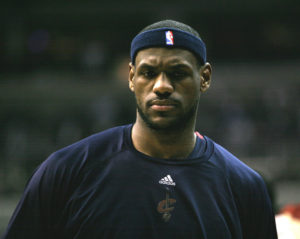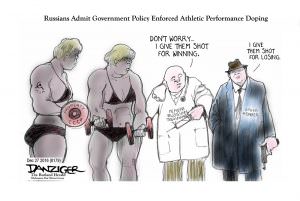Take Me Out to the BALCO
On April 2, 2002, the Los Angeles Dodgers played a home game against the San Francisco Giants, raising the question: If both pitcher and batter are artificially enhanced, does that level the playing field?WASHINGTON — Let’s take a brief respite from politics to consider the elasticity of human potential:
On April 2, 2002, the Los Angeles Dodgers played a home game against the San Francisco Giants. In the top of the second inning, with two men on base, Dodgers ace Kevin Brown had to face slugger Barry Bonds. Brown blew his first pitch past the game’s best hitter for a called strike. Bonds slammed Brown’s second pitch over the left-center-field fence — his first home run of the year, and number 568 in his storied career.
It is now assumed, of course, that Bonds may well have been juiced on steroids at the time; the previous year he had set the all-time single-season record of 73 home runs, and his musculature was almost freakishly swollen. But even the baseball fundamentalists who want to excise all of Bonds’ suspect home runs from the hallowed record books should make an exception for number 568, right? Because we now have an allegation that Brown was juiced, too — on human growth hormone and maybe steroids as well.
If both pitcher and batter are artificially enhanced, doesn’t that level the playing field?
Brown is one of more than 90 major league players mentioned in former Sen. George Mitchell’s voluminous report on the problem of steroids and other performance-enhancing drugs in the sport once considered our national pastime.
According to the report, Kirk Radomski — a former New York Mets batboy, equipment manager and hanger-on who became a kind of Dr. Feelgood to the stars — says he routinely shipped quantities of growth hormone to Brown via overnight mail. He claims that Brown, who declined to be interviewed by Mitchell, shipped back wads of cash as payment. A receipt from one of Radomski’s shipments to Brown is reproduced in the report as evidence. Radomski also says that on one occasion he sold Brown a quantity of Deca-Durabolin, which is an anabolic steroid.
Last summer, as Bonds closed in on the all-time home run record and baseball purists were all but calling for him to be hauled away and waterboarded, I wrote that in terms of steroid use, Bonds was “simply a man of his age.”
That was an understatement, it turns out.
Steroid abusers in baseball “range from players whose major league careers were brief to potential members of the Baseball Hall of Fame,” Mitchell reported. He said he could not establish how many players used performance-enhancing substances, but he quotes estimates by former players that range from 20 percent to “at least half.” And among the players specifically named are not just sluggers such as Bonds or Jose Canseco, but also 31 pitchers — including the best pitcher of our time, Roger Clemens, who denies the allegation.
Let me be clear: People shouldn’t abuse steroids or growth hormones in an effort to improve their athletic performance. These substances are bad for you. They are especially dangerous for kids who seek to emulate their athletic heroes by bulking up to Schwarzeneggerian proportions. Steroids don’t make great athletes out of non-athletes; there’s no pill or injection that will give you the ability to pick up the rotation of the ball as it leaves the pitcher’s hand and discern whether it’s a fastball or a slider.
Eye surgery might, though. To switch sports for a moment, golfer Tiger Woods — who added muscle the old-fashioned way, in the weight room, and who still has a neck to prove it — had laser surgery that not only remedied his nearsightedness but actually gave him better than 20-20 vision.
Have any major leaguers with normal vision gone under the laser in an attempt to gain an edge? Wouldn’t submitting healthy eyes to a performance-enhancing operation be just as problematic as taking steroids or growth hormones?
To switch sports again, as the college and professional football seasons wrap up with bowl games and playoffs, note the size of the linemen. Anything under 300 pounds is considered “small.” Of course, it’s not really healthy to carry around that much weight — and players pay the price when their football careers are over. Yet you can now see 300-pound linemen playing for elite high school programs.
Meanwhile, there are improved tests for detecting steroids but not for human growth hormone, which increases muscle mass. Does anyone imagine that there is no professional athlete still using the stuff?
My point is that we, the paying customers, don’t want normal-size athletes with normal abilities. We want to see supermen and superwomen performing super feats, and we’re willing to pay these gladiators a fortune. Why should they disappoint us? Why should we expect them to?
Eugene Robinson’s e-mail address is eugenerobinson(at)washpost.com.
© 2007, Washington Post Writers Group
Your support matters…Independent journalism is under threat and overshadowed by heavily funded mainstream media.
You can help level the playing field. Become a member.
Your tax-deductible contribution keeps us digging beneath the headlines to give you thought-provoking, investigative reporting and analysis that unearths what's really happening- without compromise.
Give today to support our courageous, independent journalists.




You need to be a supporter to comment.
There are currently no responses to this article.
Be the first to respond.